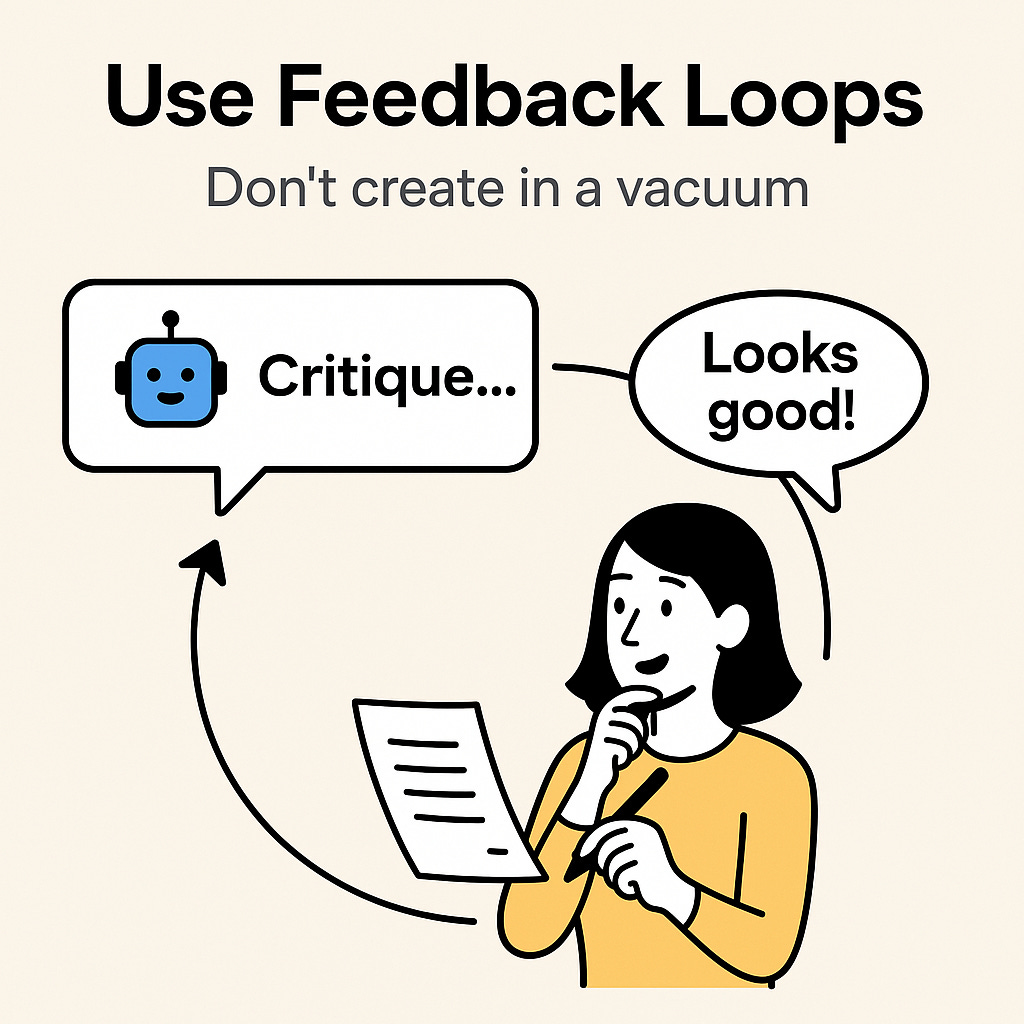Getting good content out of AI isn’t just a matter of smashing a button and shouting, "Go, a magic robot, go!" You’ve gotta put some thought into it. Time, focus, and probably a strong cup of coffee to keep up. ☕
Sure, you've got ChatGPT, Claude, Gemini, and even Copilot lined up like a dream team of robot interns. But if everything the AI spits out sounds robotic and lifeless, you’re not alone. It’s not that the AI is broken. It’s just missing a decent content architect to guide the way.
As Josh Wills might say, with a few strategic tweaks, we can go from meh to marvelous. Here are five ways to improve your AI-generated content.
1. Stop telling your AI model to “just write something” ✍️
If your prompt is "Write about X," don’t be surprised when the result sounds like a high school book report. One-line prompts get you one-dimensional results.
Be specific. Seriously:
Who’s it for? 🎯
What’s the tone? 🗣️
How should it look? 🖼️
Example: “For data engineers. Witty. Three short paras. End with bullets.”
Better yet:
Show a sample
Ask for options
The model’s not magic. It’s just really good autocomplete with a PhD. Guide it like you mean it.
For example, compare these two:
“Write a blog post about prompt engineering.”
“Write a 300-word post for junior data engineers explaining prompt engineering using a cooking metaphor. Make it witty, and start with a bad example.”
The second gets you usable content. The first gets you oatmeal.
2. Winging it is not a strategy 🛫
Starting without a plan? That’s the quickest way to write 800 words of structured nonsense.
Take five minutes. Make an outline.
Yes, the AI can help you build one.
No, it won’t know what matters until you do.
Even a few quick bullets or a rough flow sketch is enough. Then let Claude or ChatGPT do their thing.
Remember:
Good outlines don’t have to be good. They just have to exist.
You can fix a rough draft. You can’t fix a blank one.
Plan first. Generate second. Edit last. 🔁
It’s not magic. It’s just a process.
3. One-shot drafts are how bad takes happen 🧩
Asking your AI to write the entire piece in one go? That’s like asking it to cook dinner, do the dishes, and fold your laundry at the same time. It’ll try, but the results will be mushy.
Try this instead:
Chunk it. Always.
Don’t dump the whole task on the model at once.
Why?
That’s how you get generic tone, fuzzy logic, and zero edge.
Start small: begin with the intro.
Read it. Fix it.
Then move on to the next part.
Section by section. Small asks. Tight feedback loops. 🔄
The more you focus, the better it sounds. Clarity scales with constraint.
Think of it like a relay race, not a solo sprint:
Outline → Section → Review → Iterate
This keeps the narrative tight, and your sanity intact.
4. Don’t skip the edit: POLISH, POLISH, POLISH ✨
Here’s where the magic actually happens: editing.
This is your time to shine: tighten the logic, add a clever turn of phrase, or kill the fluff with precision.
Hit “generate” and walk away? Don’t be shocked when it reads like something written by, well, a robot.
Time to take off autopilot and step in as editor-in-chief. 🧠
Start with:
Fixing clunky phrasing
Spotting logic gaps
Smoothing transitions
Making sure the tone doesn’t zigzag from Slack joke to corporate keynote
The goal isn’t perfection. It’s flow, with a bit of flavor.
Drop in a metaphor. Chop a paragraph in half. Rebuild a sentence so it actually makes sense.
This is where your voice shows up. It’s also where most AI content quietly crumbles if you skip it.
Golden rule: if it sounds like a machine wrote it, it’s not done. One edit makes it better. Two? That’s when the good stuff hits.
5. Your AI wrote it. Now make it sound like you did. 🎤
Just because AI lent a hand doesn’t mean it has to read like instructions on assembling IKEA furniture.
Bland content is background noise. Your voice is the signal. 📡
So punch it up:
Crack a joke.
Toss in a metaphor.
Mention something your audience actually gets. Bonus points if it’s not from a case study.
Prompt with intent: "Write with the snark of Josh Wills and the clarity of an O’Reilly book." Suddenly, your model has a compass instead of a blindfold.
Still feels off? No problem:
Ask for three takes in different voices: snappy, serious, playful.
Feed in writing samples you like: Josh Wills, Lex Fridman, Ali Abdaal, Douglas Adams. Let the model riff.
When one lands, lock in the tone. Apply it section by section.
A single sharp analogy can turn a forgettable paragraph into the line people quote back to you.
If your AI-written blog reads like corporate onboarding docs, it deserves to be ignored. Set the bar higher than “not embarrassing.”
Boring fades. Voice lasts. Make yours count.
6. Bonus: Use Feedback Loops – Don’t create in a vacuum 🔁
Critique your content.
It’s not a common practice, but it’s a best one. Ask AI to critique your content and tell how it scores and what the weak areas are. For example, I use a GPT with books from Seth Godin and Chip Heath in it. And I ask it something like:
"Critique my content according to principles of Seth Godin and Chip Heath. Tell me what works best and what can be improved. Give the current article a score for likely performance."
And then paste the article in.
Simple, right? But very effective. It lets you quickly vet your draft so that poor quality doesn’t creep in.
Great creators seek feedback. After drafting, don’t just hit publish. Put your content through a feedback wringer. Ask a colleague or friend to tear it apart (better them than your readers). Or use the AI itself as a critic: have ChatGPT analyze Claude’s output or vice versa and see what weaknesses they spot.
Often, I’ll prompt the AI with:
"Critique the above and suggest improvements."
– and you’ll get surprisingly useful editing suggestions.
Another pro move: read your content
out loud 🔊
(or use a text-to-speech tool) to catch awkward phrasing or pacing issues. If you stumble while reading, that part needs fixing.
Some folks even record themselves giving feedback and feed that back into the AI to implement changes. Also, leverage your community. Drop a snippet in your team’s Slack channel for quick reactions.
The point is to create a feedback loop between you, AI, and real humans to refine the content. Iteration isn’t a sign your first try was bad. It’s how you make good content great.
Conclusion
AI moves fast, and tools change weekly. What matters is how you use them. Try new prompts, automate the boring parts, and fine-tune models for your writing. Watch what works, double down, and cut the rest.
Mediocre AI content is a choice. With the right workflow, you’re not just creating. You’re compounding. So iterate, measure, and improve. Now stop reading and make something worth sharing. 🚀
Got a project or idea?
Drop me a line. If it’s interesting, I’m in. If it’s weird, even better.




